Add Some Buttons
Now that the MainForm has been created with the example project, it will be the form that users see when using your plugin. The form is currently only containing a label with some text, making it a boring skill. In this step we will add two buttons to move servos between different positions.
Locate the MainForm in the Solution Explorer and double click.
When the MainForm designer loads, click on the text and press Del to remove the label from the form. This will leave you with a blank form.
Locate the Button under All Windows Forms in the Toolbox. Drag two buttons anywhere onto your MainForm.
Give the buttons readable text that tells the user what they will do. In this tutorial example, we will be programming the buttons to move a servo between two positions. Click on each button and locate the Text field in the properties window.
Double click on each button in the Designer and code will automatically be generated for the Click event of each button. This means that when a user clicks on the button, the code within the function will be executed. The functions are automatically inserted into your code when you double click on them from the designer.
Insert code into each of the button click events to move a servo. The command to move a servo is located within an EZB class. Because ARC allows more than one EZB connection, the list of EZB's available is an array. It is safe to assume that the first EZB is used the most. Here is the code which will move the servo connected on the EZ-B port D0 between position 10 degrees and 170 degrees when the buttons are pressed.
private void button1_Click(object sender, EventArgs e) {
EZ_Builder.EZBManager.EZBs[0].Servo.SetServoPosition(EZ_B.Servo.ServoPortEnum.D0, 10);
}
private void button2_Click(object sender, EventArgs e) {
EZ_Builder.EZBManager.EZBs[0].Servo.SetServoPosition(EZ_B.Servo.ServoPortEnum.D0, 170);
}
When your code has been entered, it will now look like this.
Let's compile your project to ensure there are no errors before continuing to the next step. Press CTRL-SHIFT-B and watch the Output window for any error messages. If everything compiles okay, you will see a similar message result to the screenshot below.
Assuming you have no errors and everything compiles fine, press F5, the project will compile and load ARC. Add the robot skill plugin to your workspace and test it out!
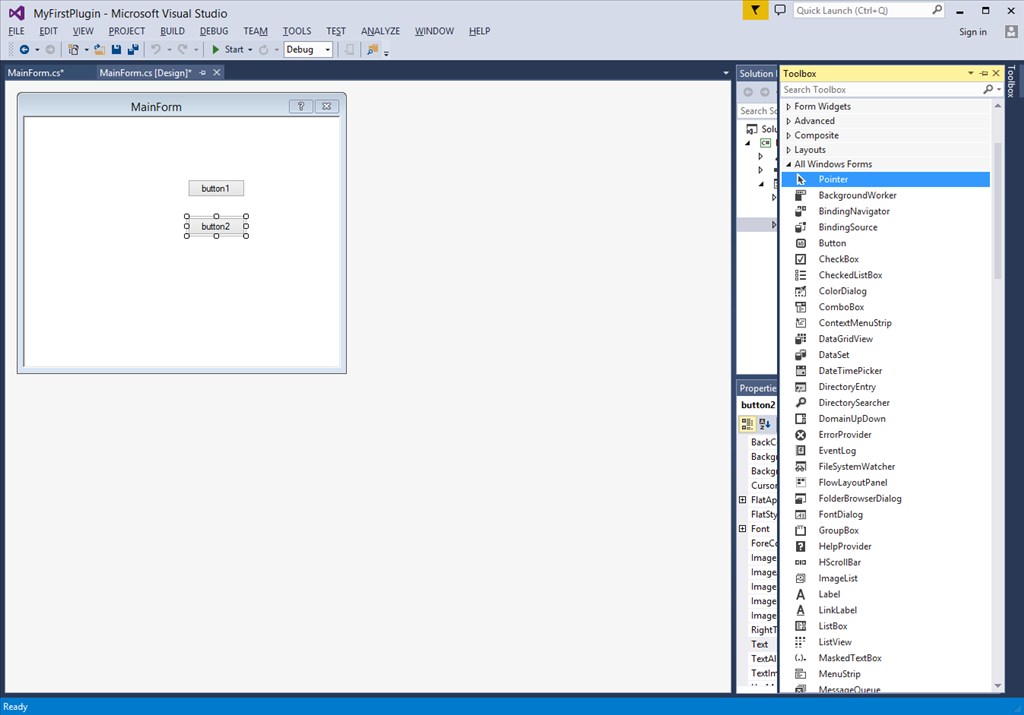
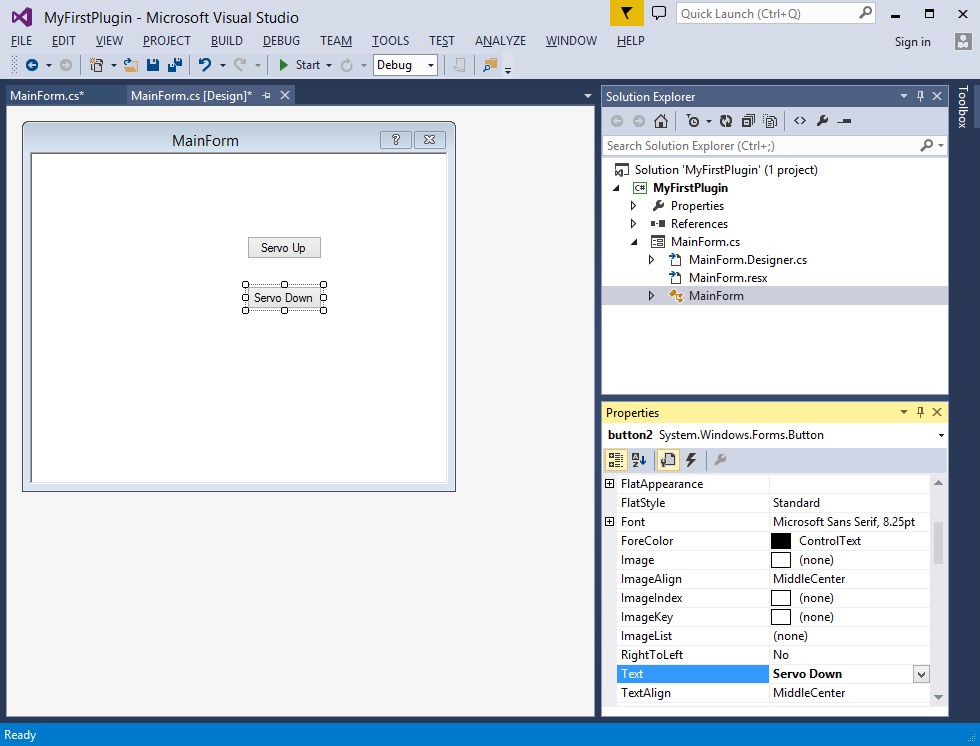
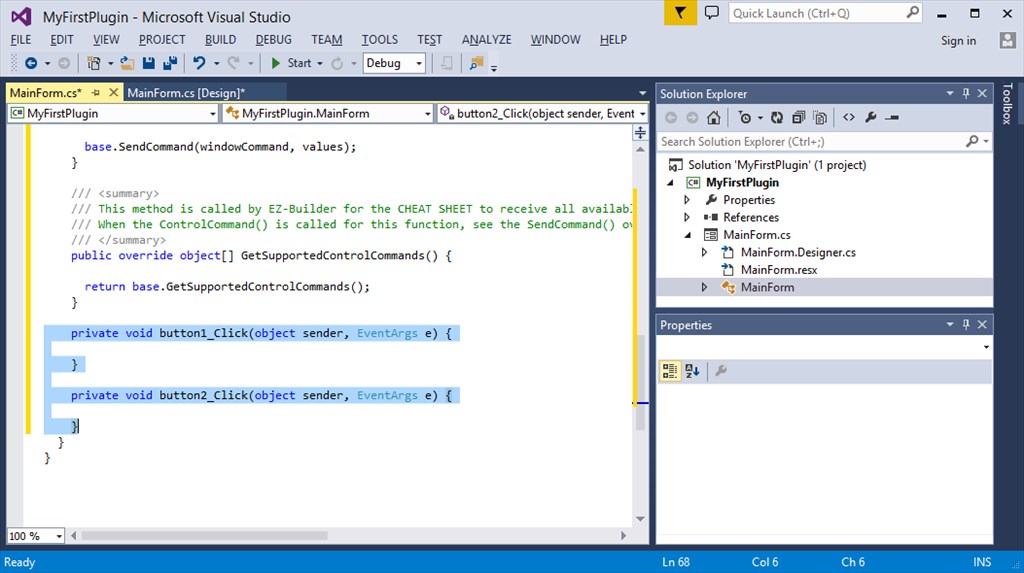
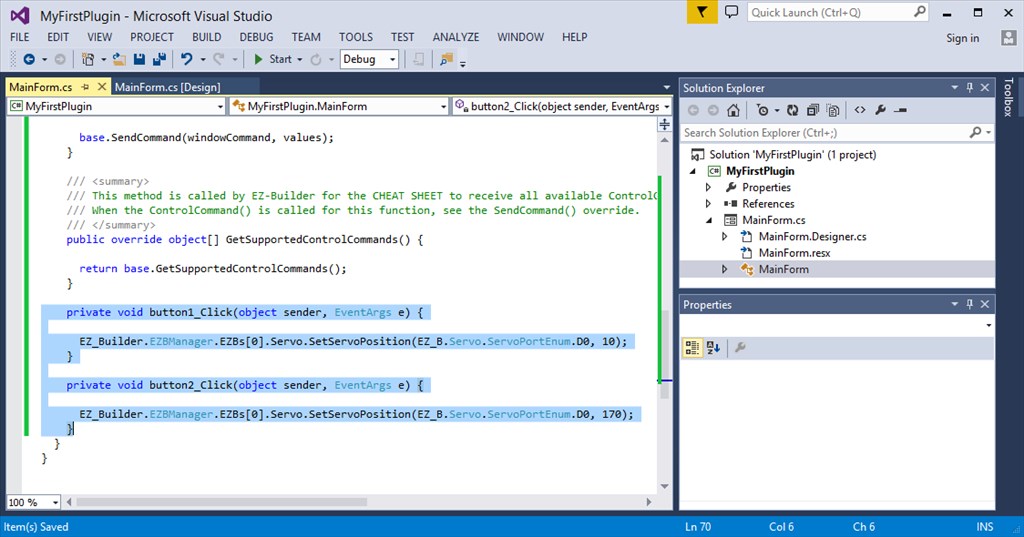
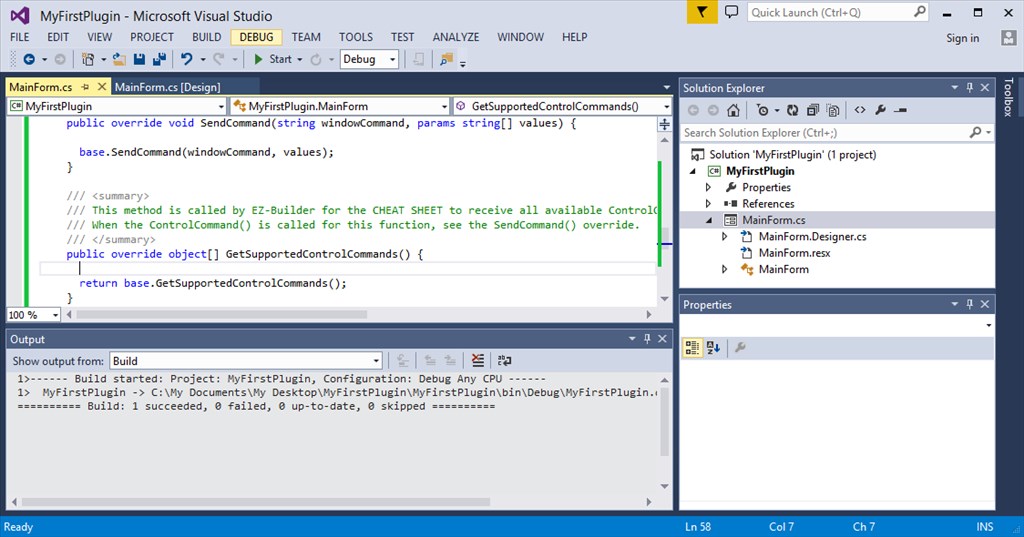

When the popup says it doesn’t detect visual studio, you can still skip and continue. I wonder why it’s not detecting it? We had a hard time trying to find a proper way of detecting - even Microsoft’s suggestion didn’t actually work eye roll
ill look into it a bit further and see if we can find a better way of detecting
@DJ: It's easy to find the Visual Studio 2017 and up: Microsoft: https://github.com/Microsoft/vswhere/wiki/Find-MSBuild
Some quick c# code to use with .NET: https://github.com/ppedro74/Utils/blob/master/FindVisualStudio/Program.cs
We went this route and it didn’t work on my computer - because I had a preview of visual studio installed which isn’t in that directory path. Microsoft had numerous suggestions of detecting visual studio. The one which worked for our various installations was a registry check.
apparently with the above individual, the registry didn’t work either. I’ll have to combine a few methods.
everything looks simple from the outside - until you have a hundred thousand+ installations of your software. That’s when you run into things like this lol
@DJ: I agree sometimes the things go out of script easily.
I avoid going through the registry keys, unless is recommended by the vendor. A lot of people blame the changes (keys, entries are renamed etc), but, that is normal if I own my product is my business and is part of the software evolution. Some products you can break the support contract agreement if you query directly the database, or if you look elsewhere outside of the public API.
Is true story some years ago a "rogue" developer on my team released a Sharepoint integration using a mix of APIs and database queries, everything worked well with multiple clients, until one day the Microsoft Black suits visit one of the customers to follow up on an unrelated support ticket, and they basically used "unsupported" card and left the client hanging, and we had problems too, unfortunately the Rogue developer went to another galaxy ... and the team suffered the consequences.
That does not mean I'm not tempted to do it...
I used the vswhere before and I would say is almost 99% bulletproof, is used with Xamarin, NVIDIA, Intel setups. If you add vswhere.exe to your project (nuget package) you cover scenarios where the tool is not present or have been deleted (broken uninstalls).
The other fallback could be ask the user the visual studio version.
The other reason to avoid registry is due to Visual Studio uses a private exclusive registry keys to store more stuff: https://www.visualstudioextensibility.com/2017/07/15/about-the-new-privateregistry-bin-file-of-visual-studio-2017/
So the things are getting more complex.
The above post is only part of the "Full solution" for example I have one setup with visual studio 2017 c# installed and Visual studio 2019 with Python and C++, vswhere will return 2019 version, but my c# is done with VS2017.
If you are generating customized vs version project files, maybe a fallback (ask the VS version) will cover more bases.
Yes - Microsoft has a few pages on how to identify visual studio and we tried them all during testing - the one we went with was with registry. I'm going to combine the two as using only one method apparently doesn't work for all cases.